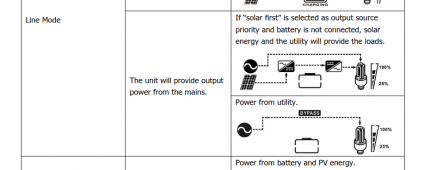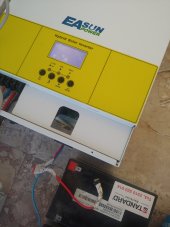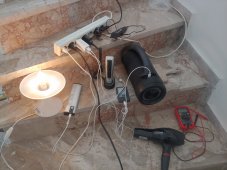I read through the manual - it seems to be the same as mine. My unit also can run without a battery, but I never tried it. I've found the attached description of the mode you're probably referring to (page 32/60). It seems indeed as if the internal inverter synchronizes its output to the grid. This is actually a great feature and I was not aware of it.I bought specifically this inverter because it can run batteryless and also blend "just the missing required power"
Looking forward to your ongoing tests in this direction. I'd be interested how it would behave if the grid fails and comes back after some time. I'm curious how they would manage to synchronize both inverter and grid with regards to each other. I know from the old APC UPS this to be a pretty complicated thing as it requires some control loops on the inverter side and a relay that adds grid power the second both voltages are in phase.
But when I think about it, this might not happen: If you run your system with loads higher than PV can supply, it would run on both. If you switch off your grid, the whole system would switch off (because PV can carry the load). You then have two options:
- Reduce load to a level that PV supports --> no problem when grid comes back as it is not needed in that second and the internal inverter can synchronize before a relay switches the grid to the output
- Wait until the grid is back --> also no problem as the internal inverter might try to carry the load but will always fail.





